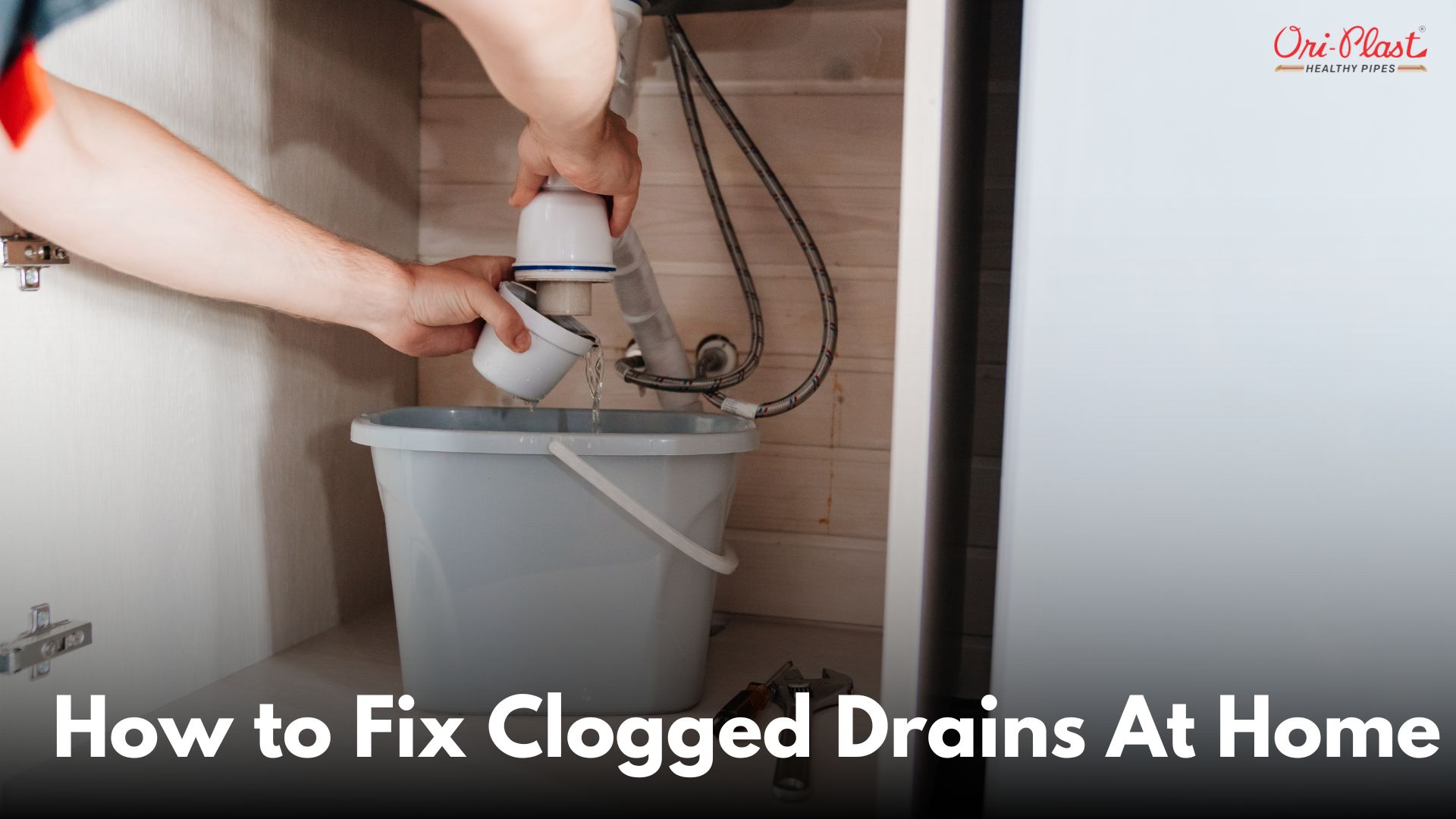Dealing with a clogged drain is never fun, but the good news is that most clogs can be fixed easily without calling a plumber. Whether it’s in the kitchen, bathroom, or utility sink, a clog can disrupt your daily routine, so it’s important to know how to tackle it. Here’s a simple guide on how to fix clogged drains yourself.
Why Do Drains Get Clogged?
Before diving into how to fix them, it’s helpful to understand what causes clogged drains in the first place. Common causes include:
- Hair: In bathroom sinks and showers, hair is a frequent culprit. Over time, it builds up and creates blockages.
- Grease: In kitchens, grease and food particles are often responsible. Grease may harden in pipes, causing slow drainage.
- Soap scum: Soap residue can accumulate and stick to the walls of pipes, eventually clogging them.
- Foreign objects: Small items like jewelry, toys, or even hygiene products can accidentally fall into drains and block the pipes.
What Tools and Supplies Do You Need?
Before you start unclogging your drain, gather the following tools and supplies. Most of these are common household items or easily found at hardware stores.
- Plunger: A basic but effective tool for clearing clogs.
- Drain snake (also called a plumber’s auger): A flexible tool that helps pull out clogs from deeper in the pipe.
- Baking soda and vinegar: A natural solution for minor clogs.
- Boiling water: Great for clearing grease clogs in kitchen drains.
- Drain cleaner: Chemical cleaners can be used for tougher clogs, but use them sparingly.
- Gloves: For hygienic purposes, especially when dealing with bathroom clogs.
Step 1: Try Hot Water
Sometimes, the simplest solutions work best. This method works especially well for kitchen clogs caused by grease.
- Boil water: Heat up a kettle or large pot of water.
- Pour the hot water down the drain: Slowly pour the boiling water into the drain. You may need to do this in stages.
- Check the drain: If the water starts flowing more freely, you’ve successfully cleared the clog.
Hot water helps melt grease or break up soap scum, allowing it to flow more easily through the pipes.
Step 2: Use a Plunger
If the clog is still there after using hot water, the next step is to use a plunger. Here’s how to do it:
- Fill the sink with enough water to cover the plunger’s suction cup.
- Place the plunger over the drain and create a seal. Make sure the plunger is positioned directly over the drain opening.
- Plunge vigorously: Push down and pull up quickly. The goal is to create enough pressure to dislodge the clog.
- Test the drain: After a few plunges, check if the water is draining. If it is, you’ve cleared the blockage. If not, move on to the next step.
Step 3: Use Baking Soda and Vinegar
This natural remedy is an easy and effective way to tackle minor clogs, especially those caused by soap scum or grease.
- Pour baking soda: Start by pouring about half a cup of baking soda into the clogged drain.
- Add vinegar: Pour half a cup of white vinegar into the drain. The mixture will fizz and bubble, which helps break down the clog.
- Let it sit: Leave the mixture in the drain for about 10-15 minutes.
- Rinse with hot water: After the bubbling has subsided, flush the drain with boiling water to clear out any remaining debris.
This method is not only effective but also environmentally friendly, avoiding the use of harsh chemicals.
Step 4: Use a Drain Snake
If the plunger and baking soda method don’t work, it’s time to use a drain snake (also known as a plumber’s auger). This tool helps remove clogs that are deeper in the pipes.
- Insert the drain snake into the drain: Push the flexible end of the snake into the pipe until you encounter resistance. This is likely where the clog is located.
- Rotate the snake: Turn the handle to help the snake grab onto the clog. As you rotate, the snake will either break up the clog or hook onto it.
- Pull the clog out: Gently pull the snake back out of the drain, bringing the clog with it.
- Rinse the drain: Once the clog is removed, flush the drain with hot water to clear any remaining debris.
Step 5: Try a Chemical Drain Cleaner
If the clog is particularly stubborn, you can try using a chemical drain cleaner as a last resort. Be sure to use it sparingly, as these chemicals can damage pipes over time. Follow the instructions on the product’s label carefully, and always wear gloves and eye protection.
- Pour the cleaner into the drain: Make sure to use the recommended amount.
- Let it sit: Allow the cleaner to work for the suggested amount of time.
- Rinse with water: Flush the drain with hot water to clear out the clog and any leftover cleaner.
Step 6: Remove the P-Trap (Optional)
If none of the above methods work, you may need to remove the P-trap, which is the curved pipe beneath your sink. This is often where clogs build up. Here’s how to do it:
- Place a bucket under the sink: To catch any water or debris when you remove the P-trap.
- Unscrew the trap: Use a wrench to unscrew the slip nuts on either side of the P-trap.
- Clear the trap: Check the trap for any blockages and remove them manually.
- Reassemble the trap: Once clear, reattach the P-trap and run water through the drain to ensure the clog is gone.
How to Prevent Future Clogs
Once you've successfully cleared your drain, take steps to prevent future clogs:
- Use drain covers: Install covers to catch hair, food, and debris before they enter the drain.
- Avoid pouring grease down kitchen drains. Instead, dispose of it in the trash.
- Flush with hot water regularly. Pour boiling water down your drains once a week to clear away any buildup.
- Use baking soda and vinegar monthly to keep the drains clean and clear.
When to Call a Plumber
If you’ve tried all of the above methods and still can’t clear the clog, it may be time to call a professional plumber. A clog deep in your home’s plumbing system may require specialized equipment that’s beyond what most homeowners have on hand.
Conclusion
Fixing a clogged drain doesn’t have to be a headache. With a few simple tools and a bit of effort, you can usually clear most clogs on your own. Start with the easiest methods, like hot water or a plunger, and work your way up to more advanced techniques if necessary. By following these steps and maintaining your drains regularly, you can avoid future clogs and keep your plumbing running smoothly.




